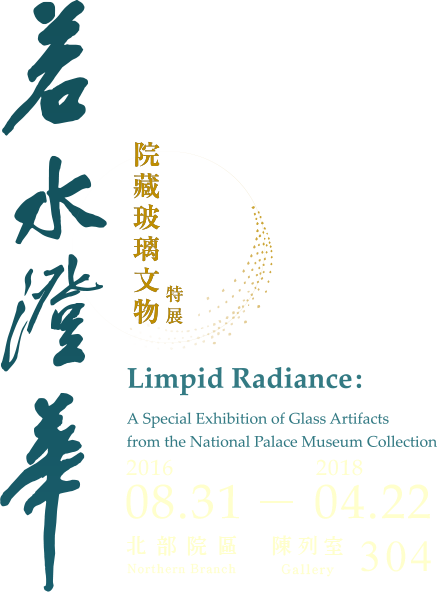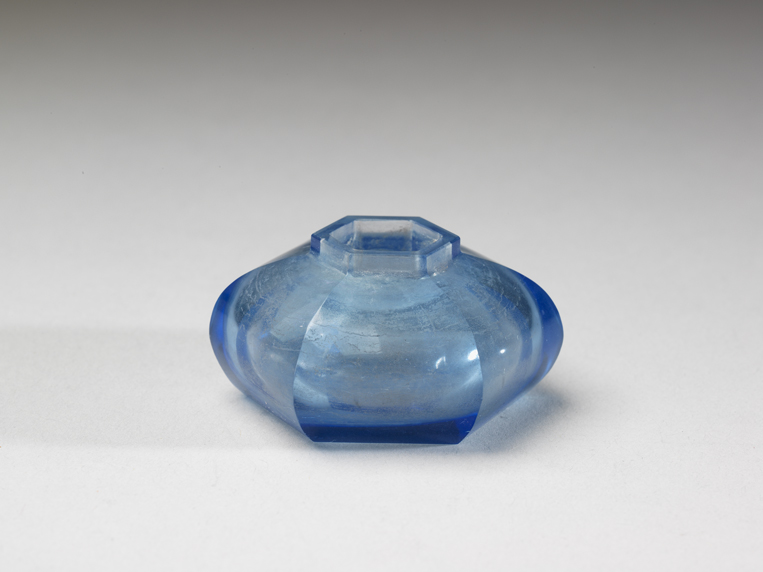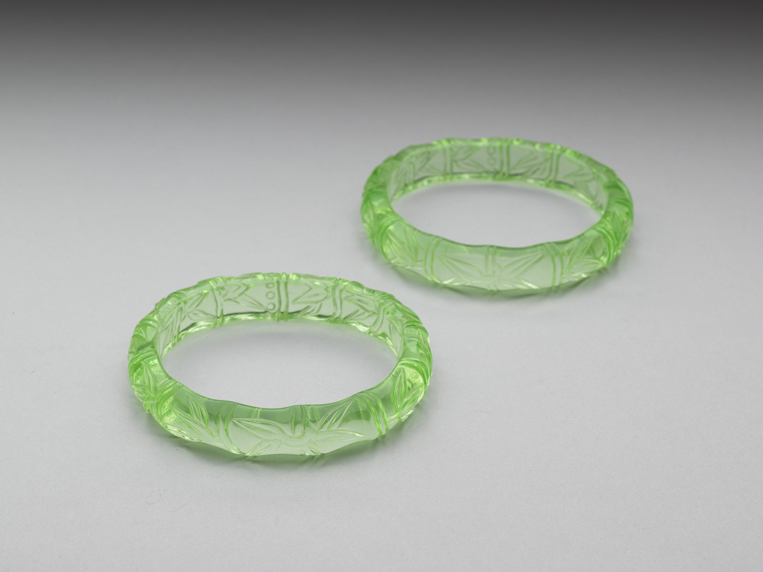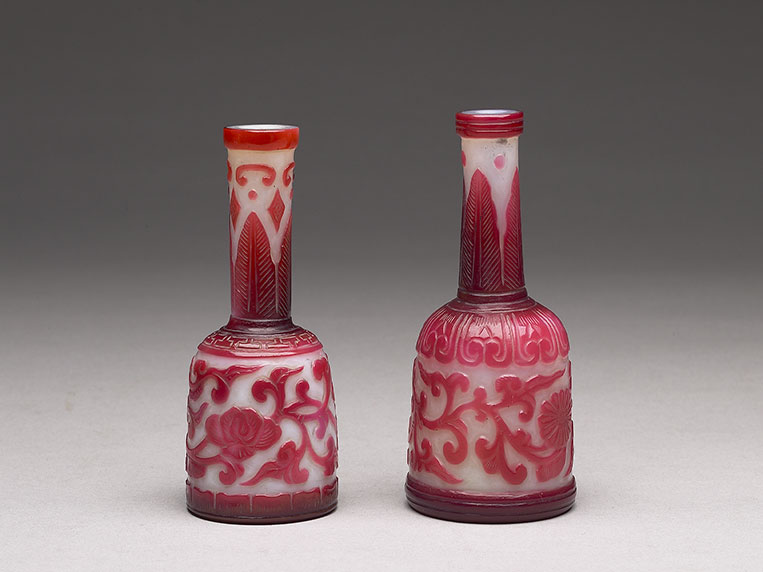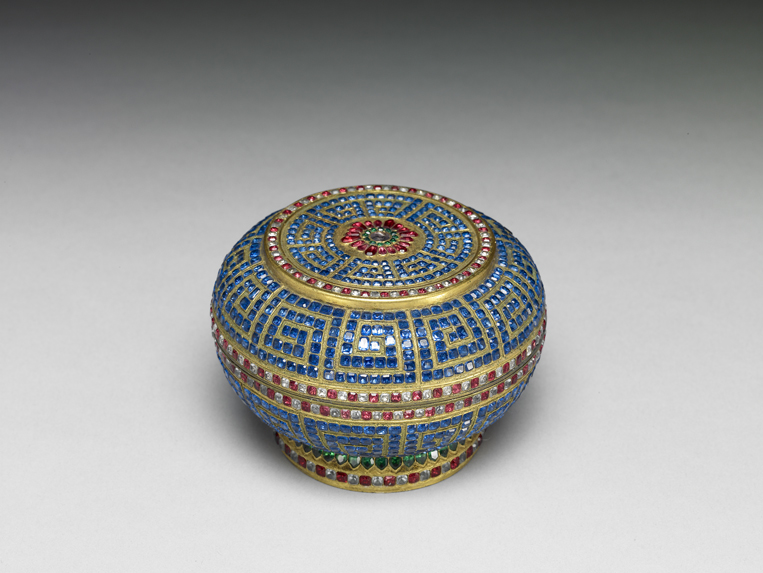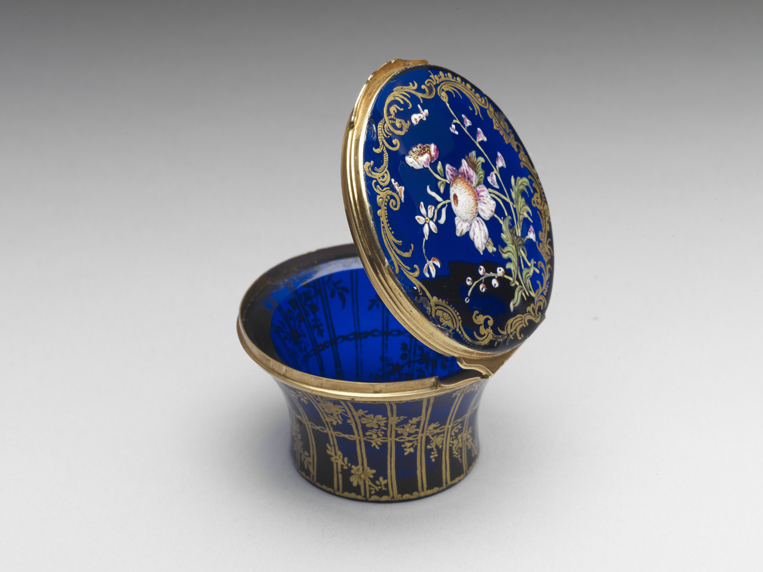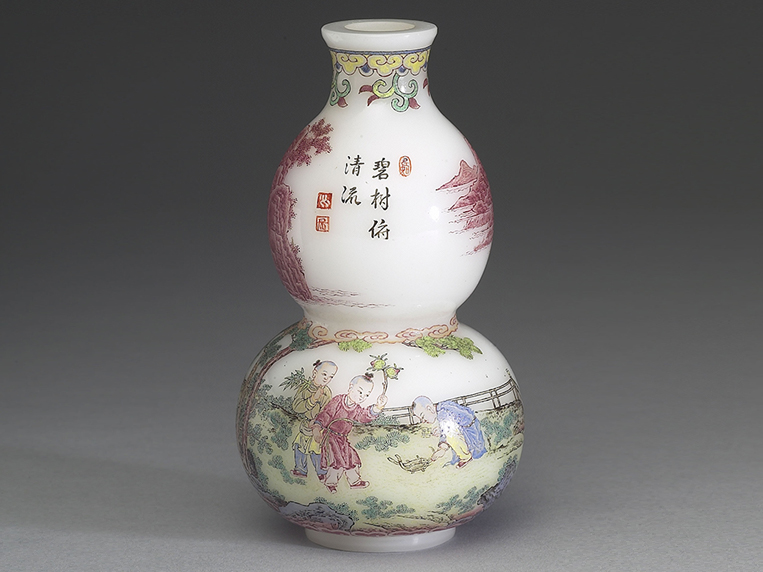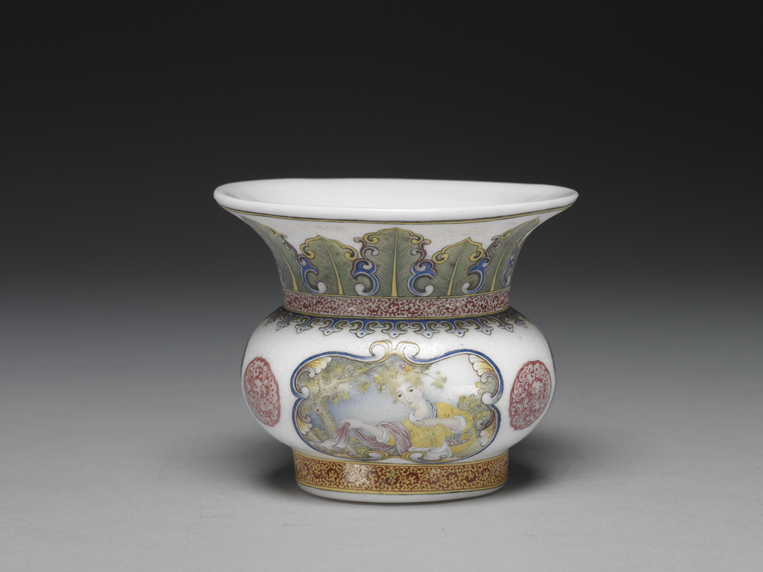Western glass began to appear in greater quantity and variety in China during the late Ming and early Qing dynasties (17th century), taking the art of glassware there to a new peak. In fact, during the reign of the Qing Kangxi Emperor (1662 - 1722), the Imperial Palace Workshops established an atelier specifically to produce glass. European missionaries and merchants introduced new pigments, formulae, and techniques for making glass objects for imperial use.
Plates of transparent glass, a wide range of monochrome glass colors, the ability to mix and add glass colors, the arts of painting enamels on glass and glass painting, and techniques for cutting glass for inlays all enhanced this material’s usefulness in a variety of contexts, such as in windows, palanquins, vessels, scholars’ studios, and even personal adornment, with new designs and inventive applications through the integration of rich art and craft traditions. Whether they be ingenious ornaments, portable snuff bottles, or other display items for appreciation, these works express the many applications of glass and the methods of its production at the time.
:::
